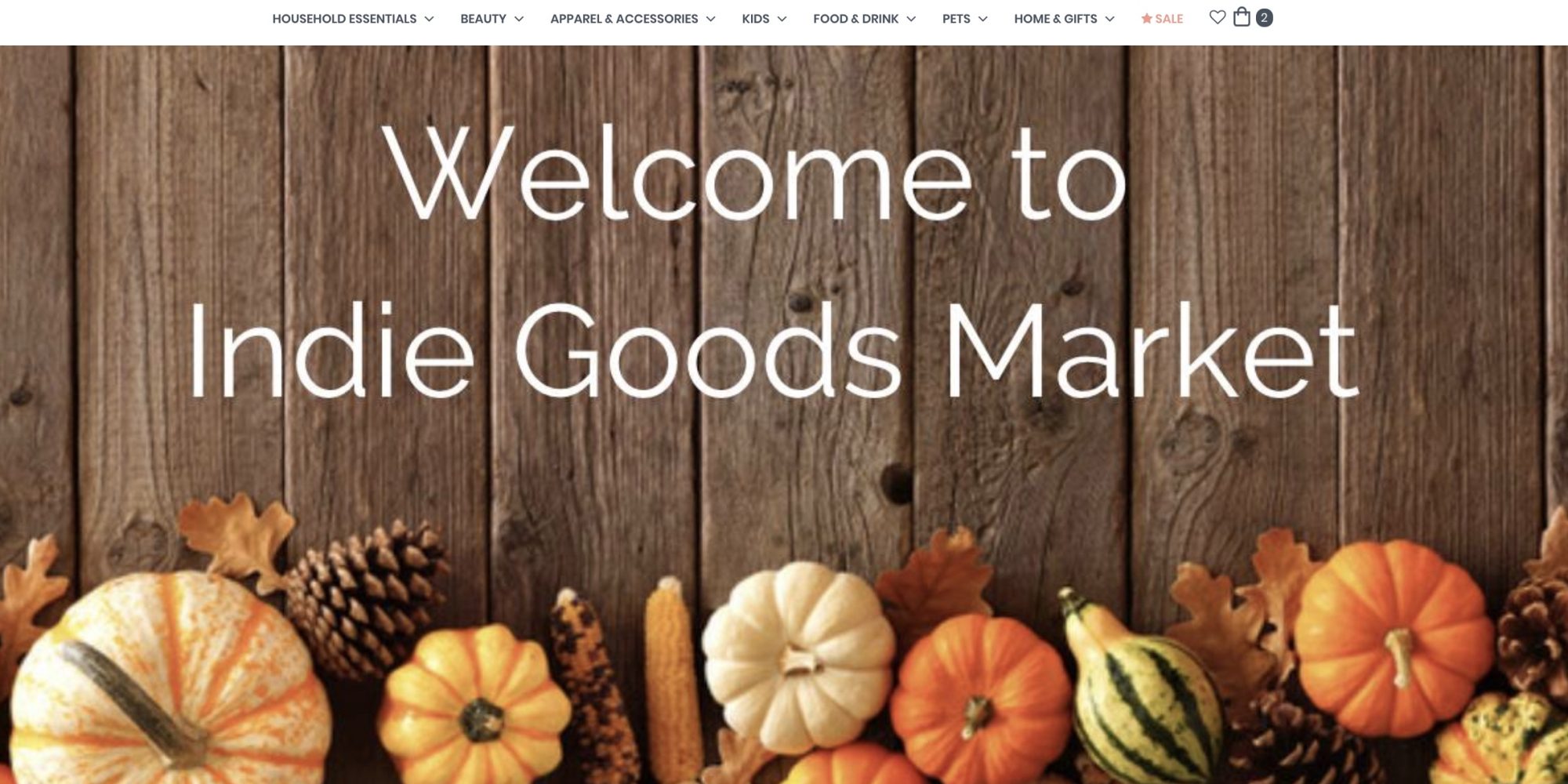
New Online-Offline Retail Concept Indie Goods Market Wants To Make Conscious Consumerism Easy
As conscious consumerism rises, boycotts of the likes of SoulCycle, Equinox and Chick-fil-A have erupted with the goal of negatively impacting companies’ bottom lines to compel action. Now, Indie Goods Market is urging people to take a positive approach to wielding their dollars for the benefit of society by purchasing domestic-made products from independent brands.
“The wealth gap gets worse every year in America, and the solution is consumer choices,” says Thad Beversdorf, an ex-investment banker, and founder and CEO of the new online-offline retail concept. “We make the right choices easier. We believe that, if consumers are making the right choices, they will change the world.”
Indie Goods Market has launched with some 2,000 items on its website from 200 brands as well as a 2,500-square-foot store in Raleigh that rotates in about half the stock for shoppers preferring to check out merchandise in person. Its selection spans household essentials, personal care, apparel, accessories, non-perishable beverages and foods, gifts, and pet and kid items. None of the products it sells are from publicly-traded companies.
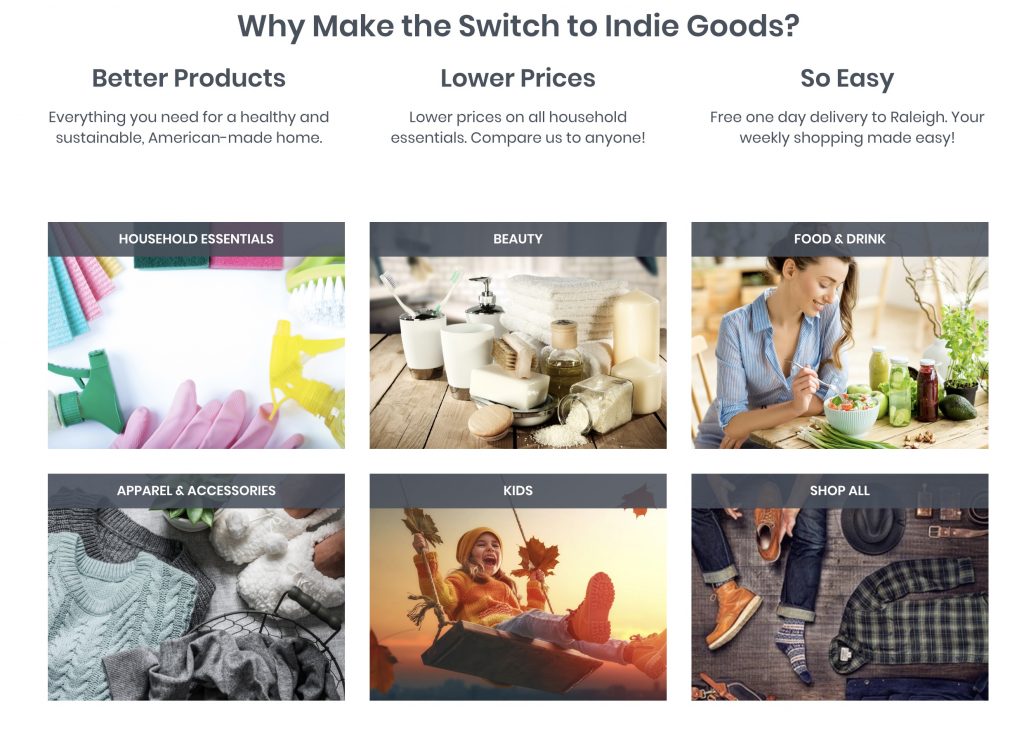
Beversdorf compares Indie Goods Market to a mashup of Etsy and Target without the stuff from China. “We consider ourselves to be the anti-big box and anti-Amazon, but we are also the anti-boutique,” he says. “From a customer standpoint, they love the uniqueness of a product that they can get in a boutique, but it’s limited in terms of product and category selection.” Boutiques tend to be pricey, too, and Beversdorf estimates prices on products available at Indie Goods Market are 30% below prices on comparable products elsewhere.
Beversdorf doesn’t have the pedigree of an economic activist. Holding an MBA from The University of Chicago Booth School of Business, the Canadian-born native of Guelph, Ontario worked as a senior vice president at Jeffries and global director at Credit Agricole CIB. Four years ago, he shifted gears and started to write for financial publications. As he delved into economic research as a writer, he became increasingly concerned with income disparity. He created a nonprofit called Institute For Sensible Economics and pondered how a business supporting independent companies could be a vehicle for economic improvement.
“We believe that, if consumers are making the right choices, they will change the world.”
“Publicly-traded firms do a really poor job in using the money that we spend in a way that stimulates broad prosperity. They give their profits to the world’s wealthiest through cash distributions,” says Beversdorf. “Independent and family-owned companies do a much better job of utilizing the money we spend with them in a way that turns into broad prosperity. They stimulate the economy with the money we spend with them.”
In 2017, he introduced e-commerce marketplace Indie Goodz, a precursor to Indie Goods Market that shuttered earlier this year. Indie Goodz relied on a drop-ship model and didn’t contain a physical component. Through running it, Beversdorf learned the drop-ship model is logistically difficult and can be costlier to operate, especially in terms of shipping expenses for brands and customers, than the model Indie Goods Market has embraced with a central warehouse storing products before they’re sent to customers. In Raleigh, Indie Goods Market provides free one-day delivery on orders over $35.

In addition, Beversdorf learned gen Z shoppers are often interested in perusing products at brick-and-mortar locations prior to purchasing. “The millennial and gen Z generations have very different mindsets,” says Beversdorf. “I see gen Z integrating a more traditional mindset than millennials.” When Indie Goodz would pop up at yoga studios and coffee shops, it garnered a welcome reception. Indie Goods Market’s store presents products in an unpretentious shopping environment in which customers can pick up purchases they made online, and sip tea and munch snacks as they explore the assortment.
Beversdorf predicts household essentials and personal care will be strong categories for Indie Goods Market. The personal care brands it carries include Vesta Apothecary, Fresc, Kaycee’s Cosmetics, Essance, Hudson Valley Skin Care, Grow Bar Organics, Uncut Standards, Addicted Beauty, Riddle Oil, Pure Principles and Social Paint. At Indie Goodz pop-ups, personal care was a robust performer. “There’s such a difference between products that are offered in big-box retailers and the quality of what we are offering customers,” says Beversdorf. “When customers experience that in person, it really hits home, and it drives a lot of sales in the personal care area.”
“We consider ourselves to be the anti-big box and anti-Amazon, but we are also the anti-boutique.”
Indie Goods Market is similar to a consignment shop in that it doesn’t buy inventory upfront from its vendors. “We pay on an intermittent basis as the sales take place. We spread the costs and risks across the entire supply community,” says Beversdorf. He estimates brands command 40% to 45% of the retail price in customary wholesale relationships. At Indie Goods Market, however, they keep 65% of the retail price on products sold.
Beversdorf asserts indie Goods Market provides “a better platform on the vendor side than Amazon and Etsy.” On top of giving vendors a larger share of the retail price, he mentions it shares analytics in a manner atypical of Amazon in particular. To address funding challenges that nascent brands face, Indie Goods Market is mulling taking minority stakes in and supplying loans to its vendors. Beversdorf says, “We want to be able to help grow this micro-economy that we are building.”
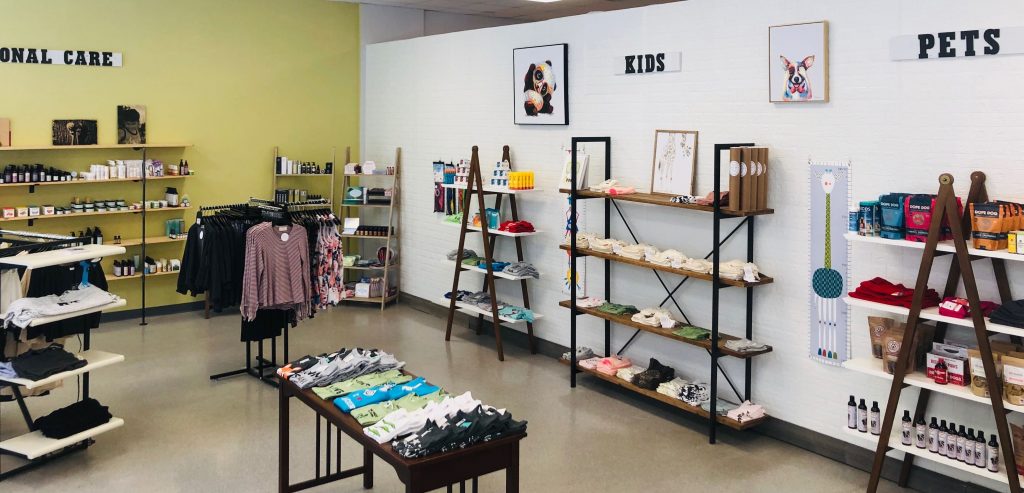
According to Beversdorf, Indie Goods Market has raised in excess of $500,000 from friends and family members. It plans to expand to a second city in the first quarter of next year with a brick-and-mortar outpost and could open as many as five stores in 2020. It’s identified Denver and Austin for possible future locations. Indie Goods Market is looking to plant units in areas that seem relatively recession-proof. Beversdorf declined to discuss revenue projections.
No matter where it heads, Beversdorf is confident Indie Goods Market’s approach will outlast consumer boycotts of companies because it doesn’t force people to drastically transform their shopping behavior. “When I buy sweater, I’m not necessary thinking about how it’s going to save the economy or a tree. That’s not to say I don’t care about that stuff, it just doesn’t enter my consumer decision matrix. I’m thinking about the color, fit and feel of it. That’s what I want people to purchase on,” he says. “We’ve already vetted all these brands, and you can shop the way you normally shop. What do you like? What seems right to you? The movement boycotts and cause-based marketplaces are short-lived.”


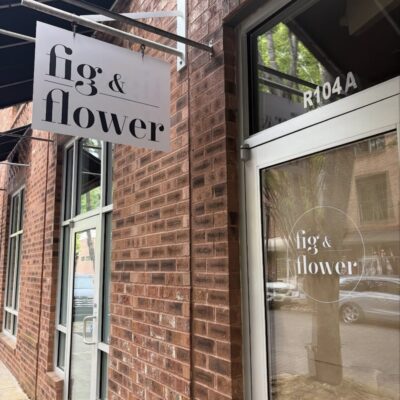
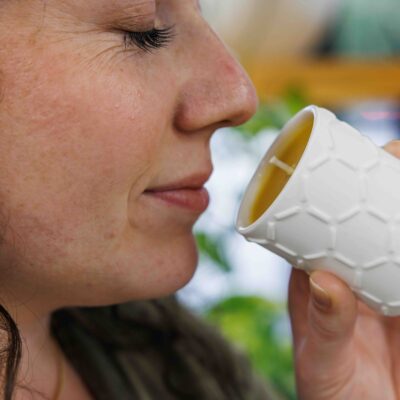

Leave a Reply
You must be logged in to post a comment.